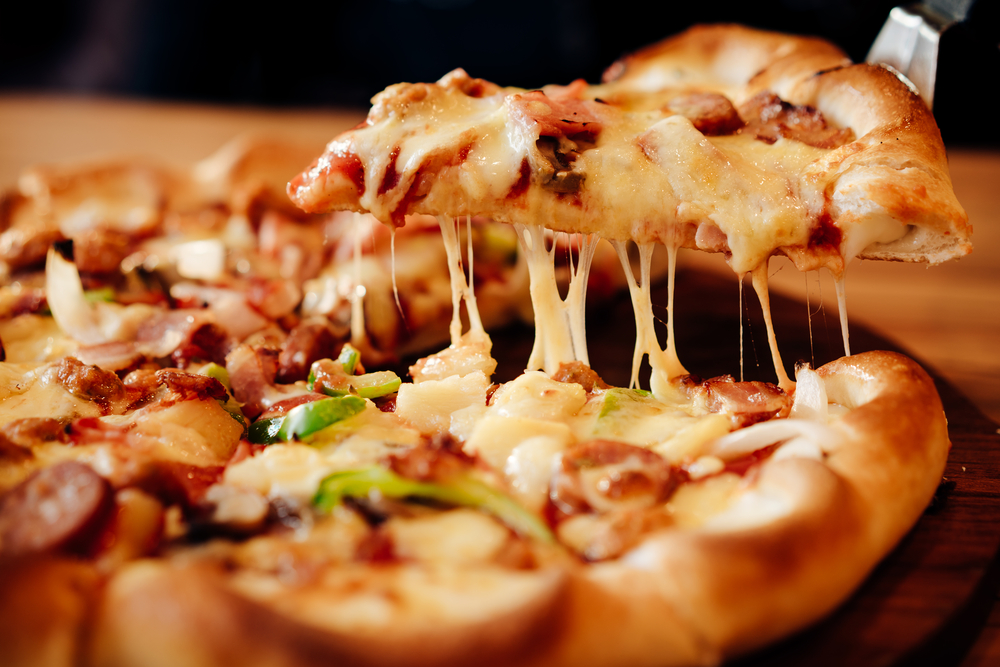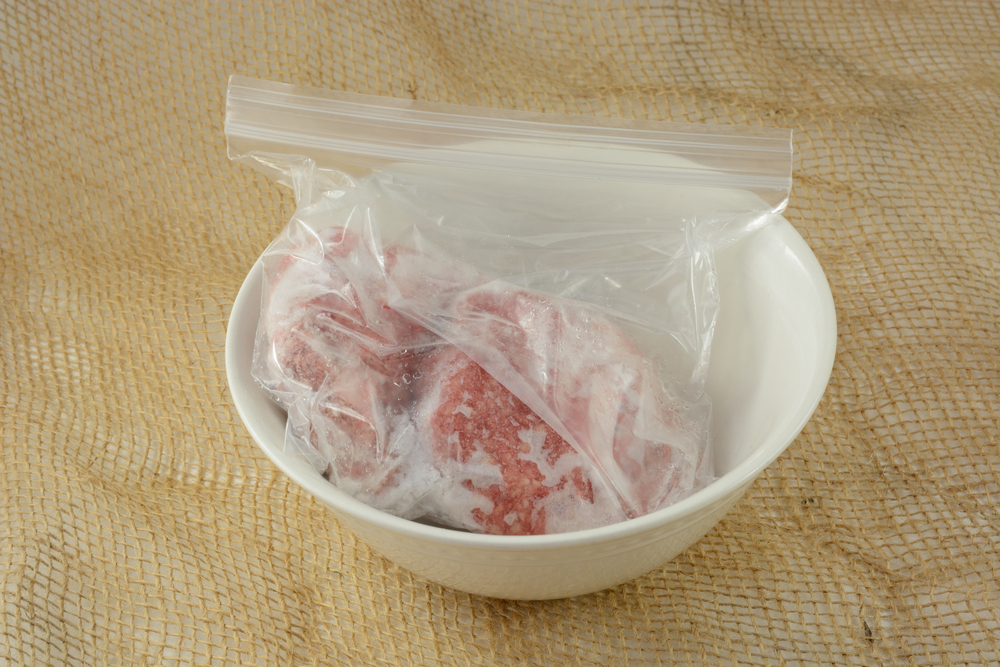Thawing frozen chicken can be a tricky task, as it requires careful handling to ensure that the meat is safe to eat and doesn’t lose its quality. Improper thawing can lead to bacterial growth and contamination, which can cause foodborne illnesses.
In this article, we will discuss the different methods of thawing chicken quickly and safely, along with some tips on handling different types of chicken cuts and cooking thawed chicken.
Understanding the Importance of Proper Thawing Before we delve into the different methods of thawing chicken, it’s essential to understand why proper thawing is crucial.
When chicken is frozen, ice crystals form inside the meat, causing the cells to break down. If the chicken is thawed too quickly, the cells can rupture, leading to a loss of texture and flavor. Moreover, if the chicken is not thawed properly, bacteria can grow on the surface, leading to foodborne illnesses.
The Cold Water Thawing Method One of the quickest ways to thaw chicken is by using the cold water method. This involves placing the frozen chicken in a leak-proof plastic bag and submerging it in a bowl of cold water.
The water should be changed every 30 minutes to ensure that it stays cold. This method can thaw a pound of chicken in about an hour. However, it’s essential to note that this method is not suitable for large cuts of chicken, such as a whole chicken or a turkey.
Key Takeaways
- Thawing chicken requires careful handling to ensure safety and quality.
- The cold water, refrigerator, and microwave methods are the quickest and safest ways to thaw chicken.
- It’s essential to handle different types of chicken cuts and cook thawed chicken properly to prevent bacterial growth and contamination.
Understanding the Importance of Proper Thawing
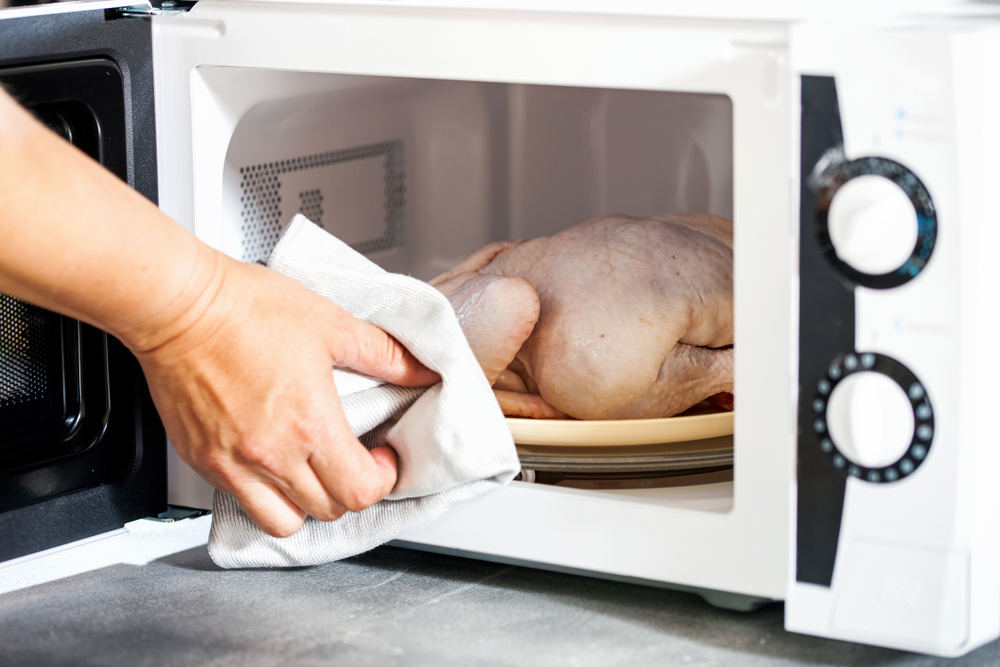
Thawing frozen chicken is a crucial step in preparing it for cooking. Improper thawing can lead to bacterial growth and increase the risk of foodborne illness. Therefore, it is essential to understand the importance of proper thawing to ensure food safety.
Frozen chicken can harbor harmful bacteria such as Campylobacter and Salmonella. These bacteria can cause foodborne illness if ingested.
The danger zone for bacterial growth is between 40°F and 140°F, so it is crucial to thaw chicken properly to prevent bacterial growth.
Thawing chicken at room temperature or in warm water is not recommended as it can lead to bacterial growth. The best way to thaw chicken is to do it slowly and safely. There are three safe methods for thawing chicken:
- In the refrigerator
- In cold water
- In the microwave
Thawing chicken in the refrigerator is the safest method as it keeps the chicken at a safe temperature while it thaws. It is recommended to place the chicken in a container and put it on a low shelf in the refrigerator for at least 24 hours or until it is no longer frozen.
Thawing chicken in cold water is also a safe method but requires more attention. The chicken should be placed in a leak-proof bag and submerged in cold water. The water should be changed every 30 minutes until the chicken is thawed.
Thawing chicken in the microwave is the fastest method, but it can be tricky. It is essential to follow the manufacturer’s instructions and use the defrost setting. The chicken should be cooked immediately after thawing in the microwave.
In summary, proper thawing is crucial to ensure food safety and prevent bacterial growth. It is recommended to thaw frozen chicken in the refrigerator, in cold water, or in the microwave. By following these safety guidelines, the risk of foodborne illness can be significantly reduced.
The Cold Water Thawing Method
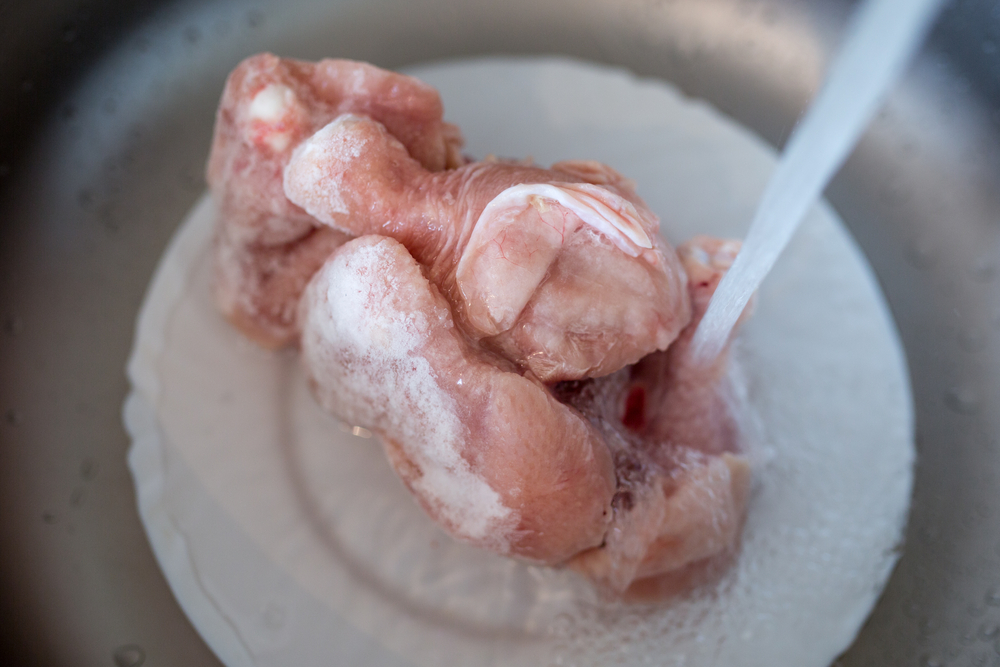
When it comes to quickly thawing chicken, the cold water method is a popular choice. This method involves submerging the frozen chicken in cold water until it thaws.
Here are the steps to follow:
Step by Step Cold Water Thawing
- Firstly, remove the frozen chicken from its packaging and place it in a leak-proof plastic bag. This is to prevent water from seeping into the chicken and diluting its flavor.
- Fill a large bowl or container with cold water. Make sure the water is not warm or hot, as this can cause the chicken to partially cook and potentially lead to foodborne illness.
- Submerge the bag of chicken in the cold water, making sure it is fully covered. If the chicken floats to the surface, place a heavy object on top of it to keep it submerged.
- Change the water every 30 minutes to ensure it remains cold. This is important to prevent bacteria growth and maintain food safety.
- Continue the process until the chicken is fully thawed. The time it takes to thaw will depend on the size and thickness of the chicken. As a general rule, it takes about 30 minutes per pound of chicken.
It is important to note that the cold water method is not the fastest way to thaw chicken. However, it is a safe and effective method that can be used when you have some time to spare. Additionally, it is important to cook the chicken immediately after thawing to prevent bacteria growth.
Overall, the cold water method is a reliable way to thaw chicken quickly and safely. Just remember to follow the steps carefully, and you’ll be able to defrost your chicken in no time.
The Refrigerator Thawing Method
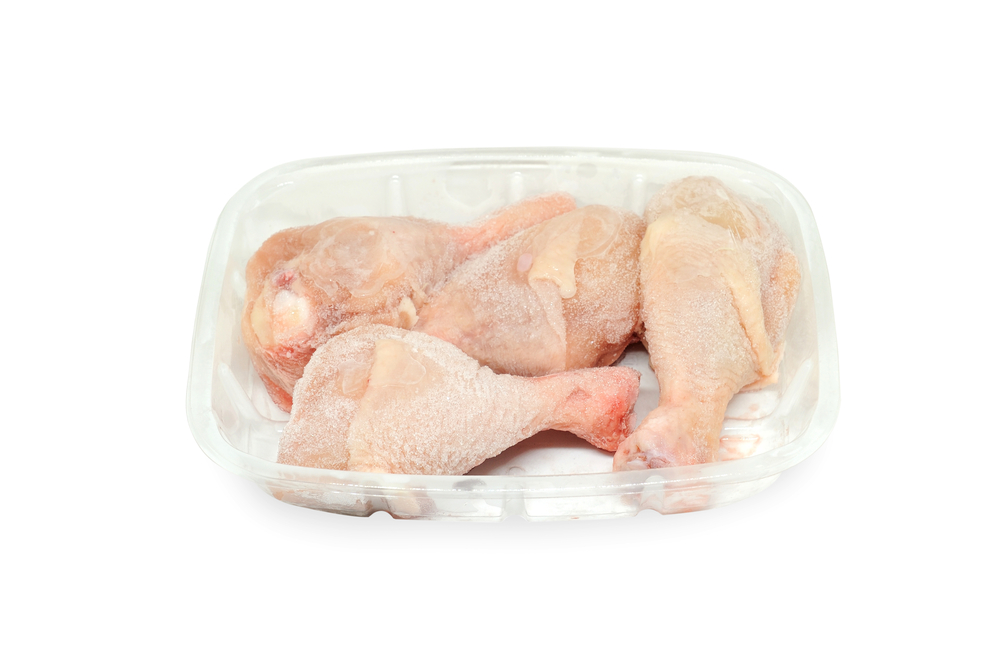
Thawing chicken in the refrigerator is the safest way to defrost chicken. It may take longer than other thawing methods, but it ensures that the chicken stays at a safe temperature throughout the process.
Here is a step-by-step guide on how to defrost chicken using the refrigerator method.
Step by Step Refrigerator Thawing
- Remove the frozen chicken from the freezer and place it in a container or on a plate to catch any drips. It’s important to keep the chicken in its original packaging or in an airtight container to prevent it from drying out.
- Place the container with the chicken in the refrigerator on the lowest shelf. This ensures that any drips do not contaminate other foods in the fridge.
- Allow the chicken to thaw in the refrigerator for at least 24 hours. Thawing time depends on the size of the chicken. Chicken breasts or thighs will take about a day to defrost completely in the fridge, while a whole chicken can take three days or more, depending on the size.
- Once the chicken is thawed, cook it immediately. Do not refreeze the chicken if you have thawed it using the refrigerator method.
It’s important to note that the refrigerator thawing method requires planning ahead. If you need to defrost chicken quickly, this method may not be the best option. However, it is the safest way to defrost chicken and ensures that the chicken stays at a safe temperature throughout the process.
The Microwave Thawing Method
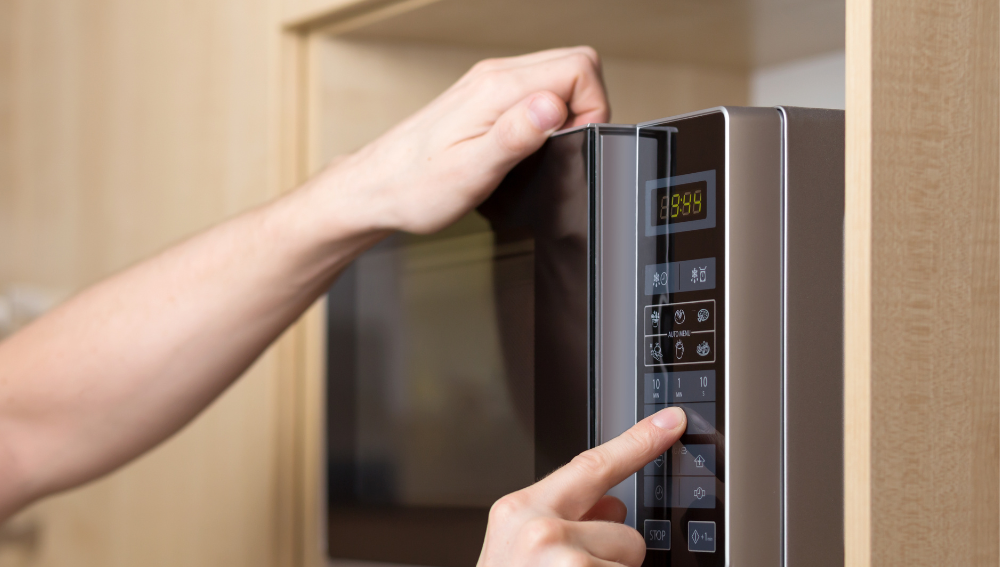
Thawing chicken in the microwave is a quick and efficient method that can save you time in the kitchen. Here are the steps to follow for successful microwave thawing:
Step by Step Microwave Thawing
- Remove the chicken from its original packaging and place it in a microwave-safe dish.
- Determine the weight of the chicken, and consult your microwave’s manual to determine the proper power level and timing for defrosting. If you don’t have the manual, set the microwave to defrost (or 20%, if your microwave doesn’t have a defrost setting).
- Cook the chicken in two-minute intervals, turning it and checking to see if it’s done.
- If the chicken is not fully defrosted, continue microwaving in one-minute intervals until it is completely thawed.
It is important to note that microwaving chicken can cause some parts of the meat to start cooking, which can affect the texture and taste. To avoid this, it is recommended to use a lower power setting and to check the chicken frequently while defrosting.
It is also important to use a microwave-safe dish and to avoid using any metal or aluminum foil, which can cause sparks and damage the microwave.
Overall, the microwave thawing method can be a convenient and time-saving way to defrost chicken, but it is important to follow the proper steps and precautions to ensure safe and successful thawing.
Safety Precautions During Thawing
Thawing chicken safely is critical to prevent the growth of harmful bacteria and avoid foodborne illness. Here are some safety precautions to follow when thawing chicken:
Follow USDA Guidelines
The United States Department of Agriculture (USDA) recommends three safe ways to thaw chicken: in the refrigerator, in cold water, or in the microwave. It is not recommended to thaw chicken at room temperature, as this can lead to the growth of harmful bacteria.
Avoid Hot Water
Do not thaw chicken using hot water, as this can cause the chicken to enter the “danger zone” temperature range between 40°F and 140°F, where bacteria can grow rapidly. Instead, use cold water or the refrigerator.
Prevent Cross-Contamination
When thawing chicken in the refrigerator, make sure to place it on a plate or in a container to prevent any juices from dripping onto other foods and causing cross-contamination. When thawing chicken in cold water, change the water every 30 minutes to keep it cold and prevent bacterial growth.
Cook Thawed Chicken Immediately
Once chicken is thawed, it should be cooked immediately. Do not refreeze chicken that has been thawed, as this can cause the growth of harmful bacteria.
Monitor for Signs of Spoilage
Thawed chicken should be used within 1-2 days of thawing. If the chicken has an off odor, slimy texture, or unusual color, it may be spoiled and should be discarded.
By following these safety precautions, you can ensure that your thawed chicken is safe to eat and free from harmful bacteria.
Handling Different Types of Chicken Cuts

When it comes to thawing chicken, it’s important to handle different types of cuts differently. Here are some tips on how to thaw different types of chicken cuts:
Chicken Breasts
Chicken breasts are a popular cut of chicken, but they can take longer to thaw than other cuts. To thaw chicken breasts, it’s best to place them in the refrigerator overnight.
If you need to thaw them quickly, you can place them in a sealed plastic bag and submerge them in cold water. Change the water every 30 minutes until the chicken is thawed.
Whole Bird
Thawing a whole chicken takes longer than thawing individual cuts. It’s best to thaw a whole chicken in the refrigerator for 24 hours per 4-5 pounds of chicken.
If you need to thaw a whole chicken quickly, you can place it in a sink or large bowl and submerge it in cold water. Change the water every 30 minutes until the chicken is thawed.
Smaller Cuts
Smaller cuts of chicken, such as wings or drumettes, can be thawed in the refrigerator overnight or in a sealed plastic bag submerged in cold water. They may also be thawed in the microwave, but be sure to follow the microwave’s instructions for defrosting.
Ground Chicken
Ground chicken can be thawed in the refrigerator overnight or in a sealed plastic bag submerged in cold water. It’s important to use ground chicken immediately after it’s thawed, as it can spoil quickly.
Boneless
Boneless chicken can be thawed in the refrigerator overnight or in a sealed plastic bag submerged in cold water. It’s important to cook boneless chicken immediately after it’s thawed, as it can spoil quickly.
Chop
Chopped chicken can be thawed in the refrigerator overnight or in a sealed plastic bag submerged in cold water. It’s important to use chopped chicken immediately after it’s thawed, as it can spoil quickly.
Overall, it’s important to handle different types of chicken cuts differently when thawing. Proper thawing techniques can help prevent foodborne illness and ensure that your chicken is safe to eat.
Effect of Thawing on Chicken Quality
Thawing is an essential step in preparing frozen chicken for cooking. However, the thawing process can have a significant impact on the quality of the chicken.
Here are some effects of thawing on chicken quality:
Texture
Thawing chicken improperly can result in a change in texture. If the chicken is thawed too quickly or at a high temperature, the texture can become mushy or rubbery.
5tOn the other hand, if the chicken is thawed too slowly or at a low temperature, the texture can become dry and stringy. Therefore, it’s important to thaw chicken at the right temperature and for the right amount of time to maintain the desired texture.
Quality
Thawing chicken can also affect its overall quality. If the chicken is thawed improperly, it can lose moisture and become dry.
This can result in a loss of flavor and a less enjoyable eating experience. Additionally, if the chicken is not thawed completely, it can result in uneven cooking and potentially dangerous bacteria growth.
Moisture
As mentioned earlier, improper thawing can result in a loss of moisture in the chicken. This can affect the taste, texture, and overall quality of the chicken. To prevent this, it’s important to thaw chicken slowly in the refrigerator or under cold running water. This will help the chicken retain its moisture and flavor.
In summary, the thawing process can have a significant impact on the quality of chicken. It’s important to thaw chicken properly to maintain its texture, quality, and moisture. By following the appropriate thawing methods, you can ensure that your chicken is safe to eat and delicious.
Cooking Thawed Chicken
Once the chicken has been thawed, it’s important to cook it properly to ensure that it’s safe to eat. Here are some cooking methods and tips for cooking thawed chicken:
Chicken Dinner
Thawed chicken can be used in a variety of dishes, including chicken dinners. Whether you’re making a classic roast chicken or a more exotic chicken curry, thawed chicken is the way to go.
Cooking Time
The cooking time for thawed chicken will depend on the cooking method and the cut of chicken you’re using. For example, boneless chicken breasts can be sautéed in a pan in about 10-12 minutes, while a whole chicken roasted in the oven can take up to an hour or more.
Slow Cooker
Thawed chicken is perfect for slow cooker recipes. Simply add your chicken and other ingredients to the slow cooker and let it cook on low for several hours. The result will be tender, flavorful chicken that’s perfect for shredding and using in tacos, sandwiches, or salads.
Sautéing
Sautéing is a quick and easy way to cook thawed chicken. Simply heat some oil in a pan, add your chicken, and cook until browned and cooked through. Sautéed chicken is great for adding to pasta dishes, stir-fries, or salads.
Instant Pot
The Instant Pot is another great way to cook thawed chicken. Simply add your chicken and other ingredients to the Instant Pot, set the timer, and let it do its thing. The result will be tender, flavorful chicken that’s perfect for adding to soups, stews, or casseroles.
Internal Temperature
When cooking thawed chicken, it’s important to make sure that it reaches a safe internal temperature of 165 degrees F. You can use a meat thermometer to check the temperature of your chicken. Insert the thermometer into the thickest part of the chicken, making sure that it doesn’t touch bone.
Cook Frozen Chicken
While it’s always best to thaw chicken before cooking it, you can also cook frozen chicken. However, it will take longer to cook and may not cook evenly.
If you’re going to cook frozen chicken, it’s important to use a cooking method that will allow the chicken to cook through without burning on the outside.
Meat Thermometer
A meat thermometer is an essential tool for cooking chicken. It allows you to check the internal temperature of your chicken to make sure that it’s cooked through and safe to eat. Make sure to clean your thermometer between uses to prevent cross-contamination.
140 Degrees F
While the USDA recommends cooking chicken to an internal temperature of 165 degrees F, some chefs prefer to cook their chicken to a lower temperature of 140 degrees F.
This is because chicken cooked to 140 degrees F will be more tender and juicy than chicken cooked to a higher temperature.
Steak
Cooking thawed chicken is similar to cooking steak. You want to make sure that it’s cooked to the right temperature without overcooking it.
Use a meat thermometer to check the internal temperature of your chicken and remove it from the heat when it reaches the desired temperature.
Defrosting Methods
There are several methods for defrosting chicken, including thawing it in the refrigerator, in cold water, or in the microwave. Make sure to use a safe defrosting method to prevent the growth of harmful bacteria.
Thawing Process
Thawing chicken can take several hours or even days depending on the method you use. Make sure to plan ahead and give yourself enough time to thaw your chicken properly before cooking it.
Refreezing Thawed Chicken
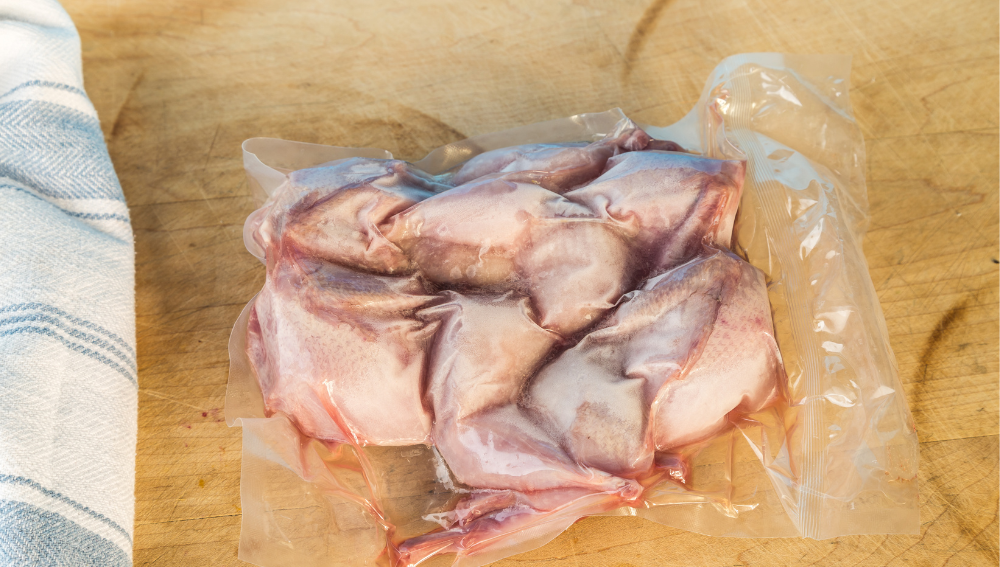
Refreezing thawed chicken is not recommended as it can increase the risk of food poisoning. When chicken is thawed, the bacteria that may have been present before freezing can start to grow again.
Refreezing chicken can cause the bacteria to multiply even more, which can increase the risk of foodborne illness.
It is important to note that refreezing thawed chicken does not necessarily mean that it is unsafe to eat. However, it is recommended to use thawed chicken as soon as possible after it has been thawed. If you have thawed chicken and cannot use it immediately, it is best to cook it and then freeze it again.
When refreezing chicken, it is important to ensure that it is still at a safe temperature. The safest way to defrost chicken is to remove it from the freezer, put it in a container, and put it on a low shelf in a refrigerator for at least 24 hours or until it is no longer frozen.
If the chicken has been thawed using the microwave or cold water, it should be cooked immediately and not refrozen.
It is also important to ensure that the chicken is properly wrapped and stored in the freezer. Frozen meat should be stored at 0°F or lower to prevent the growth of bacteria.
When refreezing chicken, it should be wrapped tightly in plastic wrap or aluminum foil to prevent freezer burn and contamination.
In summary, refreezing thawed chicken is not recommended as it can increase the risk of food poisoning. If you cannot use thawed chicken immediately, it should be cooked and then frozen again.
Additionally, it is important to ensure that the chicken is stored at a safe temperature and properly wrapped to prevent contamination.
Frequently Asked Questions
How long does it take to defrost chicken in the fridge?
Defrosting chicken in the fridge is the safest method, but it takes the longest time. On average, a whole chicken can take up to 24 hours to defrost in the fridge.
For smaller pieces of chicken, it can take anywhere from 6 to 12 hours. It is important to plan ahead and allow enough time for the chicken to defrost fully in the fridge.
How long does chicken take to defrost at room temperature?
Defrosting chicken at room temperature is not recommended as it can increase the risk of bacterial growth.
However, if you must defrost chicken at room temperature, it can take up to 2 hours for small pieces of chicken and up to 4 hours for a whole chicken. It is important to cook the chicken immediately after it has defrosted to reduce the risk of foodborne illness.
How long to defrost chicken in water?
Defrosting chicken in water is a faster method than defrosting in the fridge, but it is important to use cold water and change it every 30 minutes to prevent bacterial growth.
It can take anywhere from 30 minutes to 2 hours to defrost chicken in water, depending on the size of the chicken. It is important to cook the chicken immediately after it has defrosted to reduce the risk of foodborne illness.
Is it safe to defrost chicken in water?
Defrosting chicken in water is safe as long as the water is kept at a cold temperature and changed every 30 minutes. It is important to cook the chicken immediately after it has defrosted to reduce the risk of foodborne illness.
How to defrost chicken fast with salt?
Defrosting chicken with salt is not recommended as it can lead to uneven defrosting and increase the risk of bacterial growth. It is best to use one of the recommended methods such as defrosting in the fridge, cold water, or the microwave.
How do you safely defrost chicken?
The safest way to defrost chicken is in the fridge, allowing enough time for the chicken to defrost fully. If you need to defrost chicken quickly, you can use the cold water method, but it is important to change the water every 30 minutes and cook the chicken immediately after it has defrosted.
It is important to avoid defrosting chicken at room temperature or using hot water as it can increase the risk of bacterial growth and foodborne illness.




